ANIMALS
Ducks Are Cooler Then You Think, Here’s Why
Published
4 months agoon
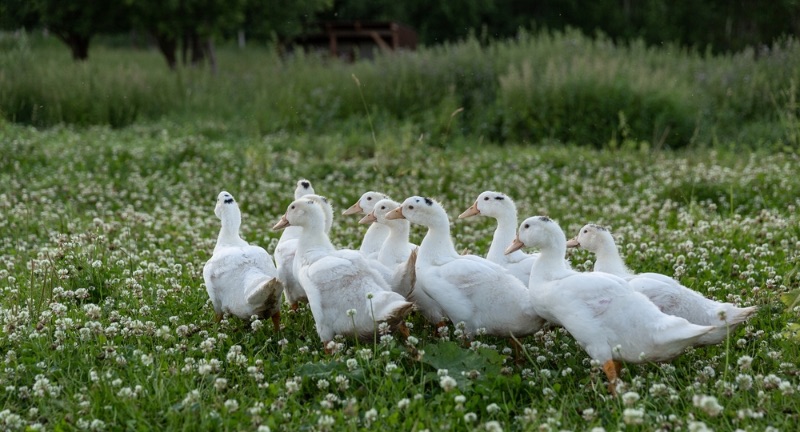
Shutterstock
Ducks are animals that do not seem too remarkable. However, once you start diving into the lives of these birds they become a whole lot more interesting. These animals have a distinct walk and calls and are some of the most recognizable creatures in nature. Found in both freshwater and saltwater, ducks play a big role in nature. Ducks have a wide range of species and behaviors that make them all the more interesting.
Ducks are omnivores

Shutterstock
Ducks are omnivores, meaning they eat both plants and animals. Their diet includes aquatic plants, small fish, insects, and even algae. They are opportunistic feeders, consuming whatever food is available in their habitat. Ducks’ varied diet helps them thrive in diverse environments like freshwater lakes and marshes.
They have waterproof feathers

Shutterstock
Ducks have a special gland located near their tail called the uropygial gland, which secretes oil. This oil is spread over their feathers when they preen, keeping them waterproof. The waterproofing ensures that ducks stay dry and buoyant while swimming. Without this natural protection, ducks would become waterlogged and unable to float effectively.
Ducks can fly long distances during migration

Shutterstock
Many species of ducks are migratory, flying thousands of miles between breeding and wintering grounds. They often travel in large flocks, known as “V” formations, which help conserve energy during the flight. Ducks use environmental cues like the sun, stars, and the earth’s magnetic field for navigation. Migration is a crucial part of their life cycle, ensuring they have access to food and optimal breeding conditions.
The quack of a duck does not echo

Shutterstock
It is often said that the quack of a duck does not echo, though this is a myth. The sound produced by ducks does in fact echo, but the conditions required for it to be noticeable are quite specific. The echo might be too faint to hear in many environments due to the surrounding noise and acoustics. Despite this, the myth remains popular, largely due to its mystery and the simple nature of ducks’ sounds.
Ducks have webbed feet for swimming

Shutterstock
Ducks have webbed feet, which make them excellent swimmers. The webbing acts like a paddle, allowing them to move through the water efficiently. This adaptation is particularly useful for dabbling ducks, who feed on aquatic plants and small creatures by diving and paddling. Their webbed feet are also used for walking on soft, wet ground without sinking.
Male ducks are called drakes

Shutterstock
Male ducks are referred to as drakes, while the females are called hens. The term “drake” is used to distinguish males from females, which is important for identification, especially during the breeding season. Drakes are often more colorful and have more vibrant plumage compared to females, who are typically more subdued in color. The distinction between males and females helps in mate selection during breeding periods.
Female ducks are called hens

Shutterstock
Female ducks, also known as hens, are vital to the reproduction of the species. They typically have more muted, camouflaged plumage than males, helping them blend into their environment and avoid predators while nesting. In many species, hens are the primary caregivers for the young, leading them to food and shelter. The hens’ subtle colors and protective instincts make them key to the survival of ducklings.
Baby ducks are called ducklings

Shutterstock
Newborn ducks are called ducklings, and they are incredibly cute and soft. They quickly grow into adult ducks as they develop the ability to swim, fly, and forage for food. Ducklings are often seen following their mother in a tight-knit group, known as a “brood.” Their first few days are crucial for learning survival skills from their parents and adapting to the environment.
Ducks have a wide field of vision

Shutterstock
Ducks have large eyes and a wide field of vision, allowing them to spot predators or food sources from a great distance. Their eyes are positioned on the sides of their heads, giving them almost a 360-degree view of their surroundings. This wide vision helps them stay alert to danger while swimming or walking. It also plays a role in their ability to find food in the water or on land.
Ducks can sleep with one eye open

Shutterstock
Ducks have the ability to sleep with one eye open, a survival mechanism to remain alert to potential predators. This is due to their brain’s ability to switch off one hemisphere while the other remains active. During this time, the duck can keep watch for threats while still resting. This adaptation allows ducks to sleep in environments where safety might be a concern.
They are found on every continent except Antarctica

Shutterstock
Ducks are incredibly adaptable and can be found in a variety of ecosystems across every continent except Antarctica. They thrive in freshwater lakes, rivers, marshes, and even coastal waters. Their adaptability has allowed them to populate areas with diverse climates, from tropical to temperate regions. However, they are absent from Antarctica, where conditions are too harsh for their survival.
Ducks communicate through a variety of sounds

Shutterstock
Ducks use a variety of vocalizations to communicate with each other, including quacking, whistling, and grunting. These sounds can signal distress, attract mates, or indicate territory. Each species of duck has its own set of vocalizations, and they can vary in pitch and tone depending on the situation. The quack, for example, is most often associated with female mallards and can be heard during mating season or when alarmed.
Ducks have a specialized bill to filter food from water

Shutterstock
Ducks have specialized bills with comb-like structures called lamellae, which help them filter food from the water. These lamellae trap small particles like algae, insects, and plants, allowing ducks to feed efficiently. Some species of ducks, such as the northern shoveler, have larger, wider bills that aid in scooping up more food. This adaptation allows ducks to forage in a variety of aquatic habitats, from shallow ponds to deeper lakes.
Some ducks migrate thousands of miles

Shutterstock
Some species of ducks are known for their long-distance migrations, traveling thousands of miles between breeding and wintering grounds. For example, the northern pintail migrates from North America to Central and South America. These migratory ducks often follow the same routes each year, using natural landmarks and the earth’s magnetic field to guide them. Their migration patterns are essential for their survival and reproduction, as they seek optimal conditions for both feeding and breeding.
Ducks are excellent swimmers

Shutterstock
Ducks are among the best swimmers in the bird world, thanks to their webbed feet and buoyant bodies. Their webbing acts as a natural paddle, helping them move swiftly through the water. Ducks’ body shapes are streamlined, allowing them to glide effortlessly. They use their wings for both propulsion and stability while swimming, making them agile and efficient in the water.
Ducks have three eyelids

Shutterstock
Ducks have three eyelids to protect their eyes and ensure clear vision in all environments. Their eyelids include two regular ones and a nictitating membrane, which acts like a protective shield. This third eyelid can be drawn across the eye to protect it from debris, water, or bright light. The additional eyelid helps them maintain good vision while swimming or flying.
The longest-living ducks can live over 20 years

Shutterstock
While the average lifespan of ducks is much shorter, some species can live more than 20 years in the wild. The longest-living ducks are often those in protected environments, where they face fewer predators and have better access to food. In the wild, the lifespan of ducks is typically limited by natural predators, disease, and habitat loss. However, in captivity, ducks can often live longer due to the care and protection they receive.
Mallard ducks are one of the most common species

Shutterstock
Mallard ducks are one of the most recognizable and common species of duck in the world. They are found in both rural and urban areas and are easily identified by the male’s bright green head and the female’s mottled brown feathers. Mallards are highly adaptable and can thrive in a variety of environments, from city parks to remote lakes. Their widespread presence and resilience make them a key species in the duck population.
Ducks build nests close to water

Shutterstock
Ducks typically build their nests close to water to ensure easy access for their ducklings once they hatch. The female often constructs the nest in tall grass or reeds, using materials such as leaves, feathers, and down. The location provides both shelter and safety from predators. Once the ducklings are hatched, they can quickly move toward the water for feeding and protection.
Ducks use their feet to paddle and steer while swimming

Shutterstock
Ducks use their webbed feet to paddle and steer as they swim, making them incredibly agile in the water. The webbing between their toes creates a larger surface area, allowing them to push more water with each stroke. This allows ducks to move quickly when they need to escape predators or catch food. Their ability to steer and change direction with precision is an important part of their swimming skill set.
Some ducks are nocturnal

Shutterstock
While many ducks are active during the day, some species are nocturnal, feeding and moving primarily during the night. Nocturnal ducks rely on their excellent vision and hearing to navigate in low-light conditions. These ducks are adapted to take advantage of the calmness of the night, avoiding predators and human activity. Nocturnal habits are often seen in ducks living in areas with high human traffic or heavy predation risk.
Ducks can dive underwater to catch food

Shutterstock
Ducks are strong divers and can go underwater to catch food like small fish, insects, and aquatic plants. They submerge themselves by paddling with their feet and using their wings to propel themselves downward. Some species, like the diving duck, are more adapted to diving than others, with stronger legs and larger bodies. Diving allows ducks to access food that is otherwise out of reach in shallow waters.
Ducks often dabble on the surface of water for food

Shutterstock
Dabbling ducks feed primarily on the surface of the water, using their bills to filter out small plants and insects. They “dabble” by tipping forward in the water, with their bodies partially submerged, and scooping up food. This feeding method is common among species like the mallard, wood duck, and northern pintail. Dabbling allows ducks to access food without needing to dive deep underwater, making it an energy-efficient feeding strategy.
Some ducks are monogamous for a single breeding season

Shutterstock
Some species of ducks form monogamous pairs that stay together for just one breeding season. During this time, the male and female work together to care for the ducklings, with the male often helping protect the nest. After the breeding season, many pairs separate and may find new mates the following year. This short-term bond is common among dabbling ducks, though some species have more permanent pair bonds.
Ducks have specialized glands to clean their feathers

Shutterstock
Ducks have specialized preen glands located near their tails that secrete oil to help keep their feathers clean and waterproof. They use their bills to spread the oil over their feathers during the preening process. This oil helps maintain the integrity of their plumage by preventing dirt and water from damaging it. The cleaning process is essential for maintaining buoyancy and protection from the elements.
Ducks are a common symbol in many cultures

Shutterstock
Ducks appear in many cultures around the world as symbols of various meanings, from luck to fertility. In Chinese culture, ducks are often associated with love and marital harmony. In European folklore, ducks are sometimes seen as symbols of adaptability and resilience. Due to their widespread presence and endearing qualities, ducks have become an enduring figure in art, literature, and mythology.
A group of ducks on water is called a raft

Shutterstock
A group of ducks swimming together on the water is known as a “raft.” Rafts form when ducks gather in large groups to feed or rest in a safe area. Rafts are common during migration, as ducks often travel in large numbers for protection and social reasons. The term highlights the collective behavior of ducks in aquatic environments.
A group of ducks in flight is called a wedge

Shutterstock
When ducks fly together in a V-shaped formation, it is called a “wedge.” This formation helps reduce wind resistance and allows the ducks to conserve energy during long flights. Each duck takes turns flying at the front, where the wind resistance is greatest. The wedge formation is commonly seen in migratory ducks, allowing them to travel long distances with greater efficiency.
Ducks can walk and swim at the same time

Shutterstock
Ducks have the unique ability to walk and swim simultaneously. This is particularly useful when they need to navigate shallow waters, where they can walk along the bottom while keeping their bodies afloat. The ability to swim and walk at once makes ducks highly adaptable to their environment. It allows them to move efficiently between land and water without needing to stop.
Some species of ducks are endangered

Shutterstock
Unfortunately, some species of ducks are considered endangered due to habitat destruction, pollution, and hunting. The loss of wetland habitats, in particular, has had a major impact on duck populations worldwide. Conservation efforts are underway to protect these species and their habitats. Many organizations are working to preserve the natural environments that ducks rely on for breeding and feeding.
Conclusion

Shutterstock
From their interesting bills to their impressive migrations ducks add a lot to nature. Understanding what makes ducks tick will make you appreciate them a whole lot more. Whether they’re swimming in a pond or flying in a V-formation, ducks will always be cooler than they seem.
More Amazing Animals+
-


27 Weird Animal Facts That You Didn’t Know
-


20 Irresistibly Cute Baby Orangutans And Fun Facts About Them
-


25 Reasons Why Huskies Make The Best Pets
-
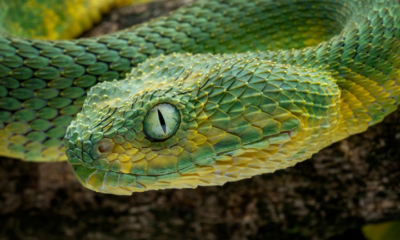

30 Most Venomous Animals In The World
-


I’ve got some gorilla duct tape if you want it.…
-
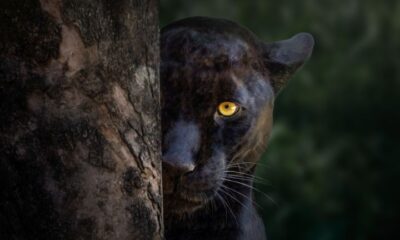

What’s Your Spirit Animal? 25 Powerful Guides and Their Meanings
-


Danish Royal Life Guards escort duck family to Copenhagen harbor
-
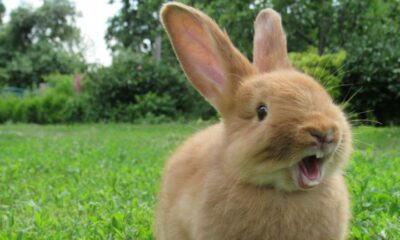

Bunny Bonanza: 25 Astonishing Facts About Rabbits
-
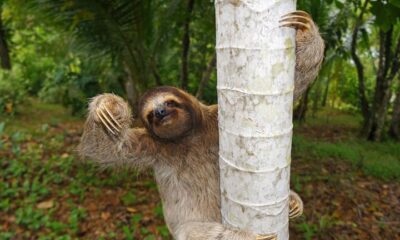

27 Odd Animals That We Actually Think Are Really Cute
-


Lazy pooch gets paddle board tow
-
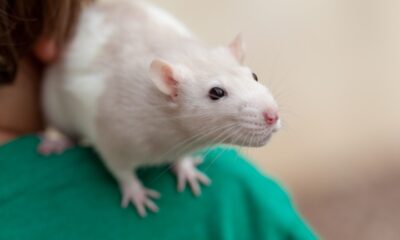

Who Knew? 33 Reasons Rats Are the Perfect Pet
-
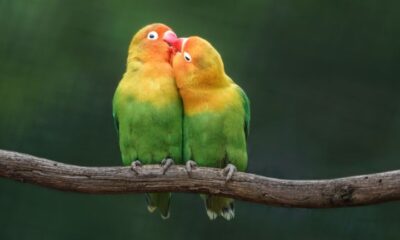

27 Animals That Mate For Life
